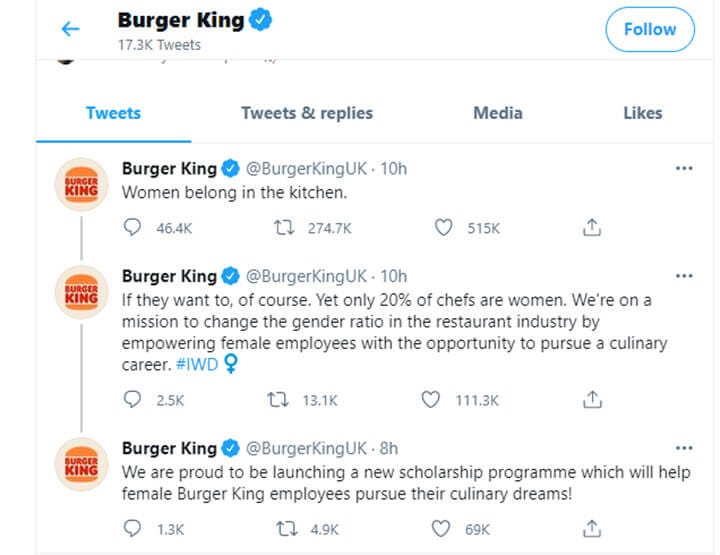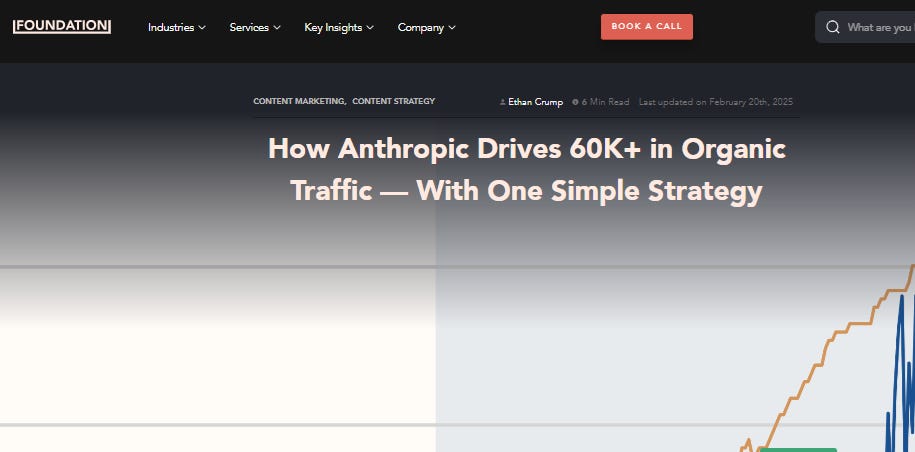“Make it go viral” is the most infuriating client request about product virality
I think some of our clients are losing the plot.
Honestly, we might need to pray for them. Why?
Because they’re way too obsessed with making their products go viral.
If you’ve been working with clients lately, I bet a few have been pressuring you to make their product blow up online, meanwhile, their goals, audience, and offers don’t even align with what they’re chasing.
I’ve had my share of these clients too. I remember one from mid-2024 who was constantly on my case about going viral.
Thing is, we had originally agreed to focus on conversions and building brand awareness. But as soon as we got started, he kept pushing for viral content.
We ended up going back and forth for weeks. Eventually, he calmed down a bit after seeing things weren’t working the way he imagined. But even now, he still checks in occasionally, low-key hoping for a miracle. And he’s not the only one some of my business partners have told me their clients are just as obsessed with virality.
Let me be clear: wanting your product to go viral isn’t bad. The problem is being obsessed with it without having any real strategy. If that’s the case, I can almost guarantee it’s not going to work.
One client literally told me that every video I made needed to hit at least 500,000 organic views.
I just looked at him thinking, “What miracle do you expect me to perform here?” I was honest and told him I couldn’t do it in the timeline he had in mind. He ended up leaving.
Some clients don’t even care about data. You show them the numbers, and they brush it off or worse, they cuss you out for even bringing it up.
So how do you handle clients with unrealistic expectations around virality?
I’ve got a few thoughts, see below.
But before we dive into that, let’s make sure we’re on the same page about what product virality even means. If you're not familiar with the term, here's a quick explanation:
What is product virality?
Product virality is when a product grows fast because users bring in other users, often without any paid marketing. It works especially well when the product gets better or more fun the more people use it (like social apps), or when people get rewards for referring others.
A classic example is PayPal in the early days. They gave people money to sign up and more money to refer friends.
That created a viral loop: people kept inviting others because they were getting rewarded.
As more users joined, the product became more useful, and the cycle fed itself. At its core, virality is about users becoming your best marketing channel spreading the product for you, naturally.
Here are two examples of viral campaigns that flopped, despite having big marketing budgets and plenty of resources behind them:
Burger King UK - international women’s day tweet (2021)
Burger King UK tried to make a bold statement on International Women’s Day with a tweet that read: “Women belong in the kitchen.” It was meant to grab attention and lead into a message about a scholarship program for female chefs.
But many people only saw the first tweet and took it at face value as sexist.
Even those who read the full thread felt the approach was tone-deaf and missed the mark, especially on a day meant to celebrate women.
The backlash was quick. The tweet was deleted, and Burger King apologized. It’s a clear case of how trying to be provocative without thinking through the platform and context can backfire badly.
Audi China - wedding commercial (2017)
Audi ran an ad in China comparing women to used cars. In the commercial, a groom’s mother inspects the bride before the ceremony checking her teeth, ears, and chest before approving the marriage.
The idea was to highlight the importance of making careful choices, like when buying a certified pre-owned Audi.
But many saw it as deeply sexist and objectifying. The reaction was overwhelmingly negative, both in China and globally.
Audi pulled the ad and apologized, but the damage was done. It became a go-to example of what happens when a brand completely misreads the tone.
Now that we’ve defined what virality really means, here’s how to handle emotional or toxic clients who are obsessed with going viral.
1. Don’t just drop the client, start with clarity
A lot of people will walk away the moment a client gets emotional or pushy. But before you cut ties, try this:
Understand what’s behind their unrealistic expectations.
Pull together data and a clear plan that addresses their request and shows what’s realistically possible.
Set up a meeting, in person or virtual, and walk them through your strategy. Talk about whether their idea has viral potential, what could get in the way, and where they should focus instead.
Some clients will ignore the facts, but most won’t. Many just want to know you're taking their concerns seriously.
Frustration often turns into trust when you offer a grounded, thoughtful response.
Even if they walk away now, there's a good chance they'll come back later once they realize you weren’t just making excuses.
So don’t drop a client too quickly if you haven’t had that real conversation.
2. If the client is toxic, here’s how to manage it without tanking your business
Cutting off a toxic client sounds appealing, but when they’re paying your bills, it’s not always that simple.
Instead of quitting cold, try these steps:
1. Set firm boundaries - If they’re being unreasonable, it might be because you haven’t made the rules clear. Define things like when you’re available, how many revisions are allowed, and how scope creep is handled. Put it all in writing.
2. Raise your rates - If they’re draining your time or patience, charge accordingly. A higher price can cover the emotional cost, or make them reconsider working with you entirely.
3. Control how much access they have - Don’t let them take over your week. Limit the time you spend on their work, and make sure they know when and how they can reach you.
4. Quietly start replacing them - Don’t wait for a blow-up. Keep serving them while actively looking for new clients. This gives you a softer landing when you’re ready to cut ties.
5. Bring in help - If they’re eating up all your time, consider outsourcing part of the work. You don’t need to do everything yourself.
6. Reframe the relationship - Sometimes the real issue isn’t toxicity, it’s a mismatch. A clear, honest talk might reset expectations and turn things around.
3. Help them rethink what “going viral” really means
Virality sounds exciting, and emotional clients may cling to it as a sign of success.
Instead of shutting them down, redirect their thinking:
1. Shift the focus to long-term growth. Start by acknowledging that viral moments are fun. Then bring it back to reality:
“Virality can happen, and it’s always exciting but the real wins come from consistency and trust. That’s what grows a brand.”
2. Make virality a bonus, not the goal. Explain how unpredictable it is, and that it doesn't always lead to results.
“We’ve seen posts with tons of views that didn’t convert at all. Meanwhile, the quieter campaigns often deliver steady, qualified leads.”
3. Back it up with real examples. Show them case studies that compare viral flops with successful long-term strategies. This makes it real for them, not just theory.
4. Give them a role in the process. A lot of emotional clients just want to feel heard. So include them.
“Let’s use your creativity to build momentum. If something goes viral, great but we’re playing the long game.”
If you’ve ever worked with a client who’s obsessed with making their product “go viral,” you know how exhausting it can be.
Everyone wants that explosive growth moment, but few understand how unpredictable and rare it really is.
Let’s get something clear up front: no marketer can guarantee virality. Anyone who says otherwise is selling hype.
Virality depends on people, timing, culture, and luck, things no one can fully control.
That said, there are smart ways to increase your odds.
Here are three practical strategies I’ve used or seen work firsthand.
1. Use bold, unexpected tactics that grab attention
If you want to go viral, you need to hijack attention in places where people already are, either physically or mentally.
Start by figuring out where your audience gathers in large numbers: festivals, trade shows, subreddits, forums, whatever.
Then, create a moment that disrupts what they expect and ties clearly to your product. Some examples:
Drone light shows with QR codes linking to freebies
Branded hotel keys or coffee cups in high-traffic areas
Guerrilla street installations or pop-up experiences
Timing and placement matter a lot. You want to catch people when they’re open to novelty, not busy or distracted.
If you can add a subtle dig at a competitor or make it part of a trending conversation, even better.
And always document everything. A viral moment that no one records or shares is a missed opportunity.
You don’t need a big budget. You need smart timing, solid execution, and the guts to try something different.
2. Make people feel proud to share
One of the best tactics I’ve seen is giving people something they want to share, without asking them to.
At Wiz, we did this by creating personalized certificates around product milestones. Here's the structure that worked:
Create a meaningful challenge
This could be a quiz, a usage milestone, or a unique achievement inside your product.Design a clean, shareable certificate
Keep your logo small. Put the user’s name big and bold. Make it something they’ll be proud to post.Let the sharing happen naturally
If it looks good and flatters them, they’ll post it. You don’t need to beg.Build a name for the club
Think “Top 1% Bug Slayers” or “Zero Critical Club.” Make it feel like joining an exclusive group.Use internal teams too
Get your employees involved. Their own selfies and shares can be a first wave of momentum.
You can repeat this often, every new challenge becomes another reason for people to talk about you.
3. Tell short, clear customer stories
Forget the fluffy case studies that no one reads. Instead, publish short, specific stories with real outcomes. Focus on:
The problem
The solution (your product)
The result (in numbers)
Interview real users. Use quotes. Keep it under 1,000 words. Avoid too much technical detail, make the business impact obvious.
A great example is Anthropic, the company behind Claude.
They publish short, no-fluff customer stories that now bring in over 60,000 organic visits a month.
Why?
Because they match what real buyers are searching for.
If you do this consistently, these stories can become a steady engine for awareness, and they’re way more sustainable than hoping for a single viral hit.
Final Thoughts
Virality shouldn’t be a core strategy, it should be a lucky bonus.
Even the best product and smartest marketing can fall flat.
So if you’ve got a client obsessed with going viral, help them focus on building things worth sharing first.
Use the three approaches above to increase your odds, but don’t overpromise.
Viral moments happen when everything lines up just right and that’s not something anyone can guarantee.
If you’ve got feedback or your own tactics that have worked, feel free to share them in the comments.








